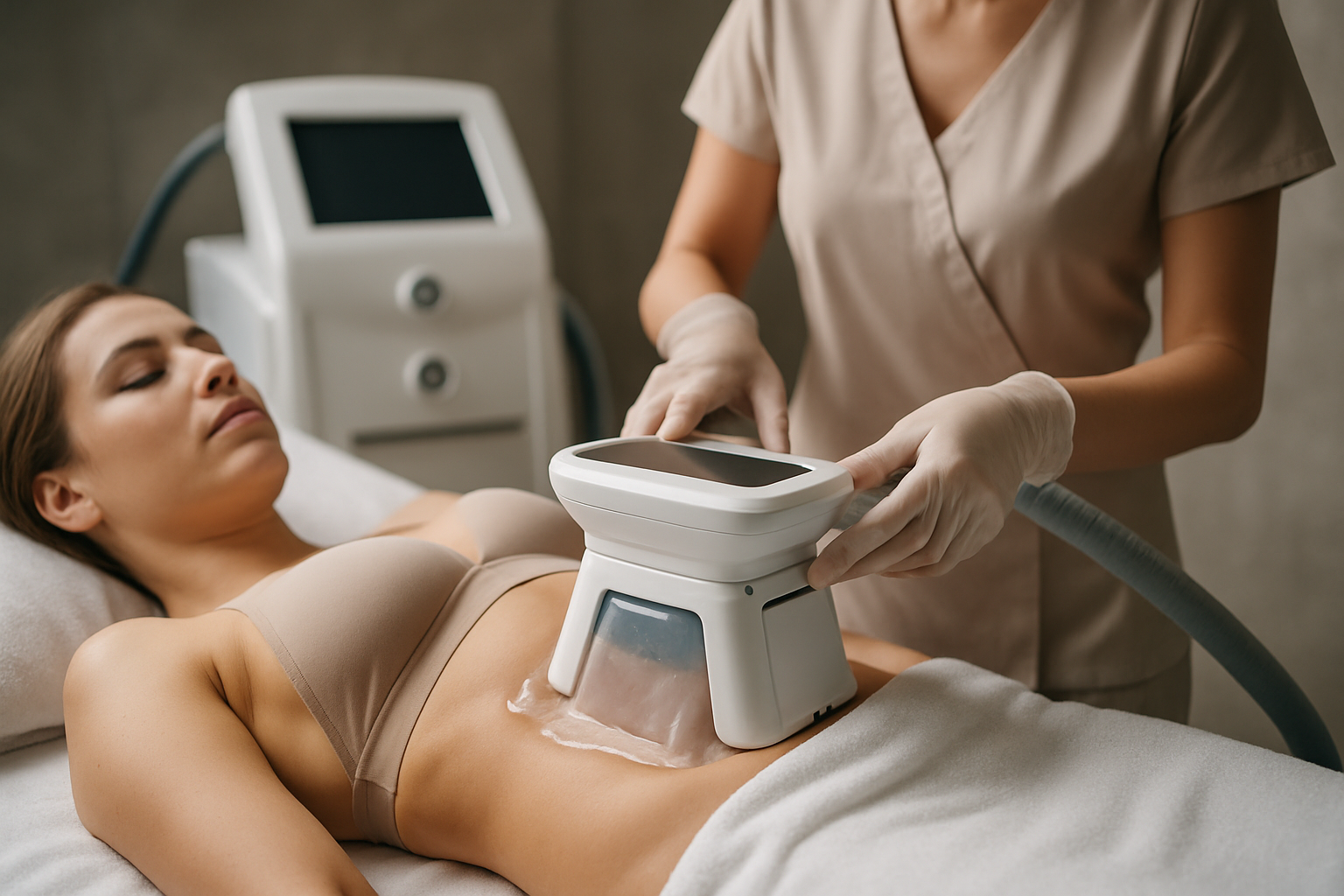Cryolipolysis: Sculpting Bodies with Cold Science
In the ever-evolving landscape of body contouring and fat reduction, a revolutionary technique has emerged that harnesses the power of cold to reshape our physiques. Cryolipolysis, colloquially known as "fat freezing," has captured the imagination of beauty enthusiasts and fitness aficionados alike. This non-invasive procedure promises to eliminate stubborn fat deposits without the need for surgery, incisions, or downtime. As the beauty industry continues to seek innovative solutions for body sculpting, cryolipolysis stands at the forefront of a new era in aesthetic treatments. Its unique approach to fat reduction has not only transformed countless bodies but has also reshaped our understanding of how temperature can be wielded as a powerful tool in the pursuit of the ideal silhouette.

The procedure typically involves the use of specially designed applicators that suction the targeted area and cool it for about an hour. During this time, the fat cells crystallize and eventually die off. Over the following weeks and months, the body’s natural processes eliminate these dead cells, resulting in a gradual reduction of fat in the treated area.
From Concept to Reality: The Evolution of Cryolipolysis
The journey of cryolipolysis from scientific concept to widely adopted cosmetic procedure is a testament to the power of observation and innovation. The idea was born when researchers noticed that children who ate popsicles frequently developed dimples in their cheeks. This phenomenon, dubbed “popsicle panniculitis,” led to the realization that cold could selectively affect fat cells.
Initial studies focused on pigs, whose skin and fat composition closely resemble humans. These early experiments demonstrated significant fat reduction in treated areas without damage to surrounding tissues. Human trials soon followed, and in 2010, the FDA cleared the first cryolipolysis device for use in the United States.
Since its introduction, cryolipolysis technology has undergone several iterations, with newer devices offering faster treatment times, multiple applicators for simultaneous treatments, and enhanced comfort features. The rapid adoption of this technology by clinics worldwide speaks to its effectiveness and appeal to consumers seeking non-surgical alternatives to liposuction.
The Treatment Experience: What to Expect
For those considering cryolipolysis, understanding the treatment process is crucial. The procedure begins with a consultation to determine if the patient is a suitable candidate. Ideal candidates are those close to their target weight but struggling with stubborn fat pockets resistant to diet and exercise.
During the treatment, the practitioner places a gel pad on the target area to protect the skin. The cryolipolysis device then suctions the fatty tissue between two cooling panels. Patients often report feeling intense cold initially, followed by numbness as the area becomes desensitized. The sensation is generally described as uncomfortable rather than painful.
Post-treatment, the area may appear red and feel sore, similar to the aftermath of an intense workout. Some patients experience temporary numbness, tingling, or bruising, but these side effects typically resolve within a few days to weeks.
Results and Expectations: The Long Game of Fat Reduction
One of the most intriguing aspects of cryolipolysis is the gradual nature of its results. Unlike surgical procedures that offer immediate changes, cryolipolysis results unfold over time as the body processes and eliminates the treated fat cells. Patients typically begin to notice changes within three weeks of treatment, with full results visible after two to four months.
Studies have shown that cryolipolysis can reduce fat layer thickness by 20-25% in treated areas. However, it’s important to note that results can vary between individuals. Factors such as age, body composition, and lifestyle habits can influence the outcome.
Interestingly, the gradual nature of the results often leads to a more natural-looking transformation. This slower process allows the skin to adapt to the changes in underlying fat, potentially reducing the risk of loose or sagging skin that can occur with more rapid fat loss.
Beyond the Belly: Expanding Applications of Cryolipolysis
While cryolipolysis initially gained popularity for treating abdominal fat, its applications have expanded significantly. Today, practitioners use the technology to target various areas of the body, including:
-
Love handles (flanks)
-
Thighs
-
Upper arms
-
Back fat
-
Double chin
-
Bra fat
-
Knee fat
The development of smaller applicators has allowed for more precise targeting of smaller fat deposits, opening up new possibilities for body contouring. This versatility has contributed to cryolipolysis becoming one of the most sought-after non-invasive fat reduction treatments globally.
The Psychological Impact: More Than Skin Deep
The effects of cryolipolysis extend beyond physical changes. Many patients report significant improvements in self-esteem and body image following treatment. This psychological boost can have far-reaching effects on various aspects of life, from personal relationships to professional confidence.
However, it’s crucial to approach cryolipolysis with realistic expectations. While the treatment can produce noticeable improvements, it is not a substitute for a healthy lifestyle. Practitioners emphasize the importance of maintaining a balanced diet and regular exercise regimen to optimize and maintain results.
The Future of Fat Freezing: Innovations on the Horizon
As cryolipolysis continues to gain popularity, researchers and developers are exploring ways to enhance its efficacy and expand its applications. Some areas of ongoing research and development include:
-
Combining cryolipolysis with other technologies, such as radiofrequency or ultrasound, to potentially enhance fat reduction and skin tightening effects.
-
Developing protocols for treating larger areas of the body more efficiently.
-
Investigating the potential use of cryolipolysis for medical applications beyond aesthetic purposes, such as treating lipomas or other benign fatty tumors.
These advancements promise to further refine and expand the capabilities of cryolipolysis, potentially opening up new avenues for both cosmetic and medical applications.
In conclusion, cryolipolysis represents a significant leap forward in non-invasive body contouring technology. By harnessing the power of cold to selectively target and eliminate fat cells, this innovative treatment offers a safer, gentler alternative to traditional fat reduction methods. As the technology continues to evolve and our understanding of its mechanisms deepens, cryolipolysis is poised to play an increasingly important role in the fields of aesthetics and body sculpting. For those seeking to refine their silhouette without going under the knife, the future of fat freezing looks promisingly cool.





